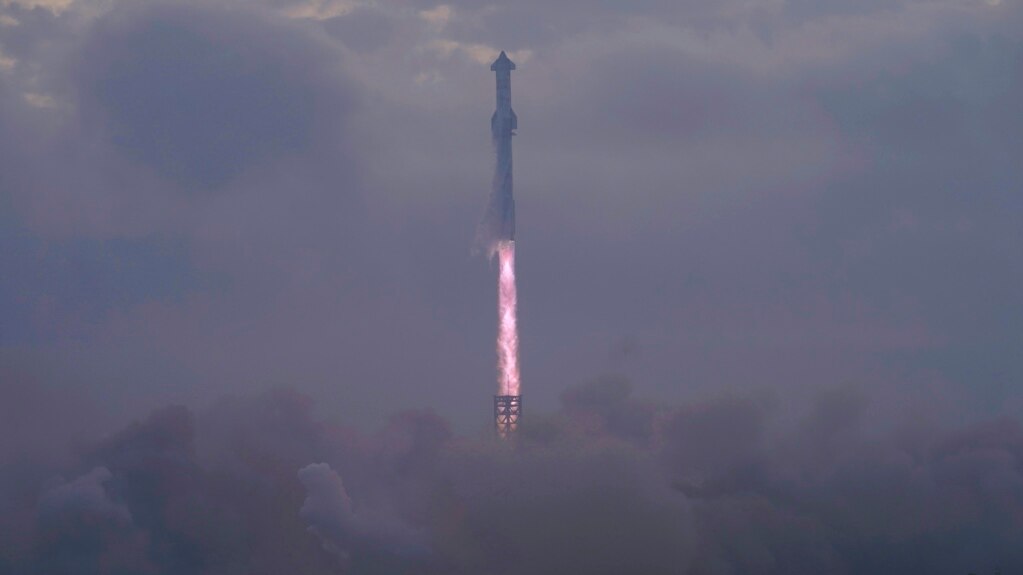The American space agency NASA says the recent test flight of SpaceX’s Starship rocket demonstrated progress in several important areas even though the rocket was lost.
NASA is planning to use Starship to carry the first astronauts to the moon since the agency’s Apollo 17 mission in 1972. But the spacecraft will have to pass additional testing before a moon mission.
Such a mission would be part of NASA’s Artemis program. The next planned trip in that program will be Artemis II, which is set for September 2025. NASA aims to send astronauts into orbit around the moon but will not attempt a landing on the lunar surface.
Artemis III, planned for September 2026, will attempt to land astronauts on the surface of the moon. SpaceX’s Starship rocket has been chosen for this mission.
Both Artemis II and Artemis III have faced delays in planned launches
SpaceX’s latest test flight of Starship took place on March 14. Starship was able to travel farther than ever before during the flight. But the rocket broke apart when attempting to re-enter Earth’s atmosphere.
At the time it broke apart, Starship was nearing a planned splashdown in the Indian Ocean, about one hour after launching from southern Texas.
During a live broadcast of the test flight, SpaceX confirmed that the rocket had been “lost” upon its re-entry attempt. Starship is designed to be reused.
Two Starship test flights last year both ended in explosions minutes after liftoff. By surviving for close to 50 minutes in its latest test, both SpaceX and NASA considered the effort a success.
NASA chief Bill Nelson praised Starship’s test after the launch on X. “Congrats to @SpaceX on a successful test flight! Starship has soared into the heavens. Together, we are making great strides through Artemis to return humanity to the Moon—then look onward to Mars.”
In a statement, NASA described the ways Starship’s test brought the agency closer to being ready to fly astronauts to the moon.
The space agency noted the rocket used its six Raptor engines to successfully separate from its first-stage Super Heavy booster. The Super Heavy itself was powered by 33 Raptor engines.
During a Starship launch test last April, several of the booster’s 33 methane-fueled engines failed and the booster did not separate from the spacecraft. This caused the whole vehicle to explode and crash into the sea four minutes after liftoff.
SpaceX was able to double the length of the flight during another test in November. While all 33 engines fired and the booster fell away as planned, the flight ended in a pair of explosions, first the booster and then the spacecraft.
The U.S. Federal Aviation Administration (FAA) examined all the corrections made to Starship before approving the March 14 flight. The FAA said it was also investigating results of the latest flight.
The tests are important for NASA and SpaceX. They permit engineers “to test key systems and processes in flight scenarios” in an attempt to gather data to support the continued development of Starship, said Lisa Watson-Morgan. She is the Program Manager for the Starship program at NASA’s Marshall Space Flight Center in Huntsville, Alabama.
SpaceX officials have said they plan to carry out at least six more test flights of Starship this year, if the company receives all necessary government approvals.
I’m Bryan Lynn.

